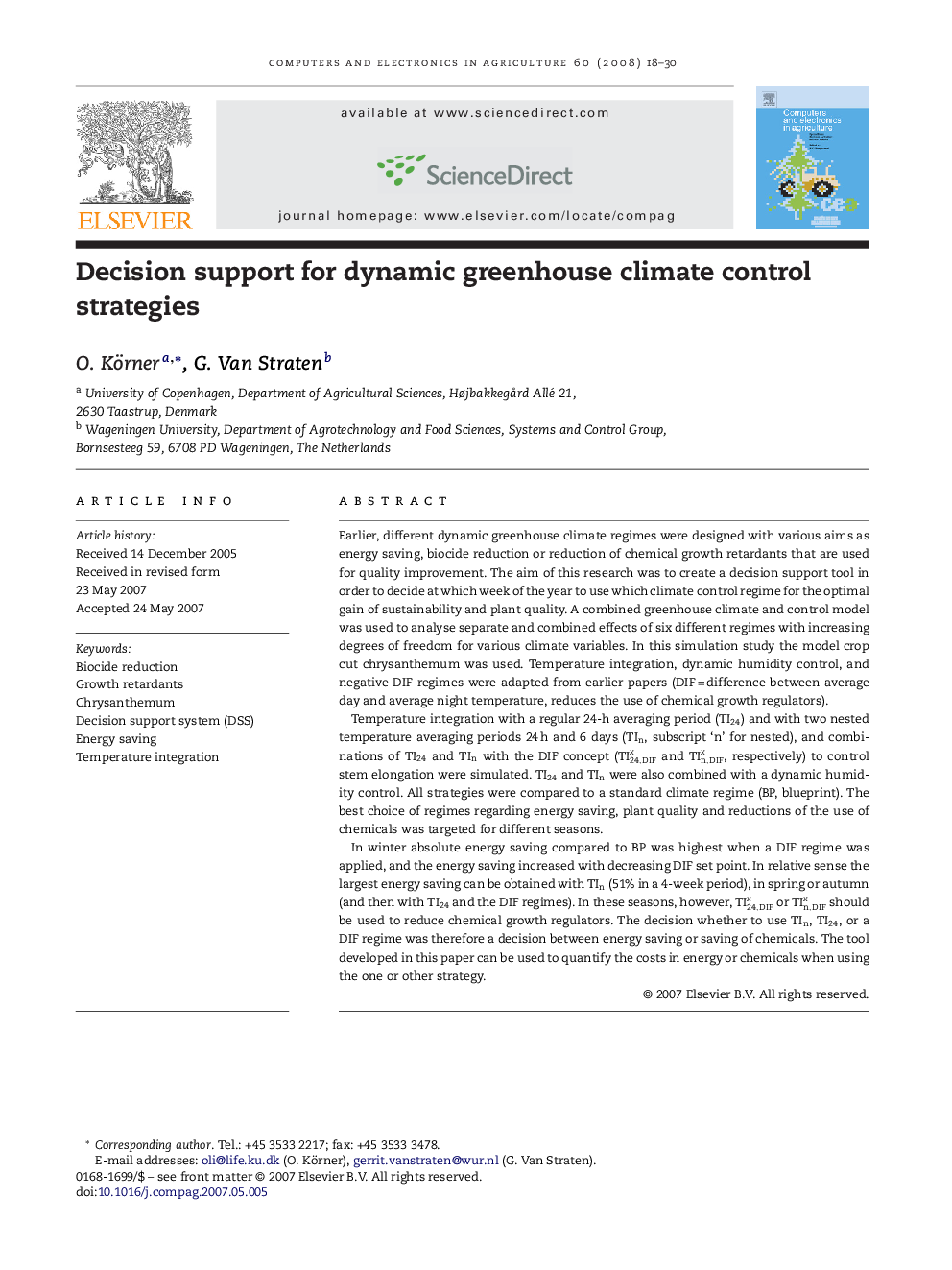| کد مقاله | کد نشریه | سال انتشار | مقاله انگلیسی | نسخه تمام متن |
|---|---|---|---|---|
| 85410 | 158945 | 2008 | 13 صفحه PDF | دانلود رایگان |

Earlier, different dynamic greenhouse climate regimes were designed with various aims as energy saving, biocide reduction or reduction of chemical growth retardants that are used for quality improvement. The aim of this research was to create a decision support tool in order to decide at which week of the year to use which climate control regime for the optimal gain of sustainability and plant quality. A combined greenhouse climate and control model was used to analyse separate and combined effects of six different regimes with increasing degrees of freedom for various climate variables. In this simulation study the model crop cut chrysanthemum was used. Temperature integration, dynamic humidity control, and negative DIF regimes were adapted from earlier papers (DIF = difference between average day and average night temperature, reduces the use of chemical growth regulators).Temperature integration with a regular 24-h averaging period (TI24) and with two nested temperature averaging periods 24 h and 6 days (TIn, subscript ‘n’ for nested), and combinations of TI24 and TIn with the DIF concept (TI24,DIFx and TIn,DIFx, respectively) to control stem elongation were simulated. TI24 and TIn were also combined with a dynamic humidity control. All strategies were compared to a standard climate regime (BP, blueprint). The best choice of regimes regarding energy saving, plant quality and reductions of the use of chemicals was targeted for different seasons.In winter absolute energy saving compared to BP was highest when a DIF regime was applied, and the energy saving increased with decreasing DIF set point. In relative sense the largest energy saving can be obtained with TIn (51% in a 4-week period), in spring or autumn (and then with TI24 and the DIF regimes). In these seasons, however, TI24,DIFx or TIn,DIFx should be used to reduce chemical growth regulators. The decision whether to use TIn, TI24, or a DIF regime was therefore a decision between energy saving or saving of chemicals. The tool developed in this paper can be used to quantify the costs in energy or chemicals when using the one or other strategy.
Journal: Computers and Electronics in Agriculture - Volume 60, Issue 1, January 2008, Pages 18–30